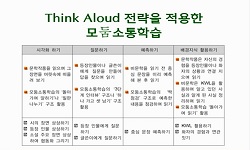The purpose of this study is to investigate how effectively nonverbal communication factors are presented in English textbooks for the first grade of middle school under the 7th National Curriculum and to make useful suggestions to contribute to teach...
http://chineseinput.net/에서 pinyin(병음)방식으로 중국어를 변환할 수 있습니다.
변환된 중국어를 복사하여 사용하시면 됩니다.
- 中文 을 입력하시려면 zhongwen을 입력하시고 space를누르시면됩니다.
- 北京 을 입력하시려면 beijing을 입력하시고 space를 누르시면 됩니다.
중학교 영어교과서 한·영 문화내용 분석 : 비언어적 요소를 중심으로 = (An) analysis of cultural contents in middle school first grade english textbooks
한글로보기https://www.riss.kr/link?id=T11948976
- 저자
-
발행사항
서울 : 경희대학교 교육대학원, 2010
-
학위논문사항
학위논문(석사) -- 경희대학교 교육대학원 , 영어교육전공 , 2010. 2
-
발행연도
2010
-
작성언어
한국어
- 주제어
-
DDC
822 판사항(22)
-
발행국(도시)
서울
-
형태사항
ⅱ. 70 p. : 삽도 ; 26 cm
-
일반주기명
경희대학교 논문은 저작권에 의해 보호받습니다.
지도교수: 염행일
참고문헌 : p. 66-68 - 소장기관
-
0
상세조회 -
0
다운로드
부가정보
다국어 초록 (Multilingual Abstract)
The criteria of the textbook analysis are as follows:
1) The types of nonverbal communication factors
2) The ways to present nonverbal communication factors
3) The cultural backgrounds of nonverbal communication factors
4) Whether the cultural tasks of activities are presented in order to understand effectively nonverbal communication factors students have already learned
The results of the analysis can be summarized as follows: First, the types of nonverbal communication factors tend to be focused on kinesics including gestures and facial expressions. Second, nonverbal communication factors are presented in connection with verbal communication expressions within a certain communicative context together with pictures, drawings, and brief explanations. This shows that a successful intercultural communication can be accomplished by understanding nonverbal communication factors. Third, most of these factors are included in the universal culture. Through differences between American and Korean cultures, nonverbal communication factors need to be learned. So, more content of American and Korean cultures are needed in the textbooks. Fourth, the cultural tasks or activities related to nonverbal communication factors are rarely given across most textbooks. To learn various nonverbal communication factors and real communicative contexts, more cultural tasks or activities need to be presented in textbooks.
In conclusion, to develop students' communicative competence, a textbook needs to be provided with useful and various nonverbal communication factors. Also, cultural tasks or activities are necessary to be accompanied with a textbook. In particular, English teachers are played a crucial role in helping the student understand the cultural insights. Therefore they should have systematic knowledge about targeted the culture and nonverbal communication factors for efficient teaching.
The purpose of this study is to investigate how effectively nonverbal communication factors are presented in English textbooks for the first grade of middle school under the 7th National Curriculum and to make useful suggestions to contribute to teaching nonverbal communication factors. The study was carried out by analyzing specific nonverbal communication factors such as kinesics, eye contact, proxemics, chronemics, paralanguage and artifacts presented in the textbooks.
The criteria of the textbook analysis are as follows:
1) The types of nonverbal communication factors
2) The ways to present nonverbal communication factors
3) The cultural backgrounds of nonverbal communication factors
4) Whether the cultural tasks of activities are presented in order to understand effectively nonverbal communication factors students have already learned
The results of the analysis can be summarized as follows: First, the types of nonverbal communication factors tend to be focused on kinesics including gestures and facial expressions. Second, nonverbal communication factors are presented in connection with verbal communication expressions within a certain communicative context together with pictures, drawings, and brief explanations. This shows that a successful intercultural communication can be accomplished by understanding nonverbal communication factors. Third, most of these factors are included in the universal culture. Through differences between American and Korean cultures, nonverbal communication factors need to be learned. So, more content of American and Korean cultures are needed in the textbooks. Fourth, the cultural tasks or activities related to nonverbal communication factors are rarely given across most textbooks. To learn various nonverbal communication factors and real communicative contexts, more cultural tasks or activities need to be presented in textbooks.
In conclusion, to develop students' communicative competence, a textbook needs to be provided with useful and various nonverbal communication factors. Also, cultural tasks or activities are necessary to be accompanied with a textbook. In particular, English teachers are played a crucial role in helping the student understand the cultural insights. Therefore they should have systematic knowledge about targeted the culture and nonverbal communication factors for efficient teaching.
목차 (Table of Contents)
- Ⅰ. 서론 1
- 1.1 연구의 필요성 및 목적 1
- 1.2 본 논문의 구성 3
- 1.3 연구의 제한점 3
- Ⅱ. 이론적 배경 4
- Ⅰ. 서론 1
- 1.1 연구의 필요성 및 목적 1
- 1.2 본 논문의 구성 3
- 1.3 연구의 제한점 3
- Ⅱ. 이론적 배경 4
- 2.1 문화의 개념 4
- 2.2 언어와 문화 8
- 2.3 문화교육의 목표와 중요성 13
- Ⅲ. 한국 문화와 영어권 문화의 차이 15
- 3.1 의식구조에 의한 한‧영 문화 차이 15
- 3.1.1 집단주의와 개인주의 16
- 3.1.2 계층주의와 평등주의 20
- 3.1.3 간접주의와 직접주의 22
- 3.1.4 형식주의와 실용주의 24
- 3.1.5 감정주의와 합리주의 25
- 3.2 비언어적 의사소통에 의한 한‧영 문화 차이 26
- 3.2.1 눈맞춤 28
- 3.2.2 얼굴 표정 29
- 3.2.3 제스처 29
- 3.2.4 유사언어 30
- 3.2.5 공간학 31
- 3.2.6 시간조절학 32
- 3.2.7 기타 34
- Ⅳ. 연구 34
- 4.1 연구 절차 및 분석대상 34
- 4.2 분석 기준 35
- 4.3 분석 내용 37
- 4.3.1 A교과서 분석 내용 37
- 4.3.2 B교과서 분석 내용 42
- 4.3.3 C교과서 분석 내용 46
- 4.3.4 D교과서 분석 내용 50
- 4.3.5 E교과서 분석 내용 53
- 4.4 분석 결과 56
- Ⅴ. 결론 및 제언 62
- 참고문헌 66
- Abstract 69








